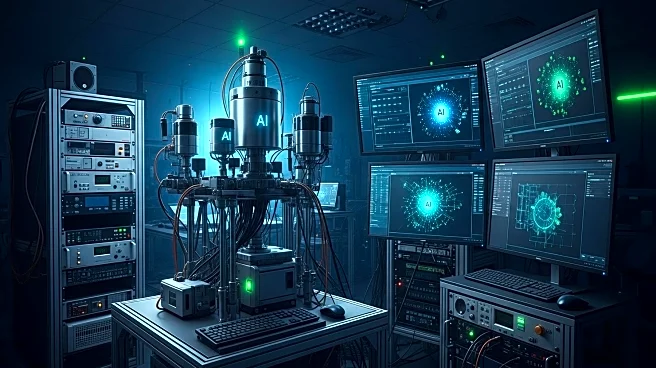What is the story about?
What's Happening?
Researchers from Stanford University, in collaboration with INGV Osservatorio Vesuviano and the University of Naples Federico II, have utilized artificial intelligence to reanalyze seismic records at Italy's Campi Flegrei. This study, published in the journal Science, identified over four times as many small earthquakes between January 2022 and March 2025 compared to previous analyses. The AI approach did not detect magma movement but highlighted shallow hybrid quakes linked to the hydrothermal system. This enhanced detection capability allows scientists to better understand stress distribution in the volcanic field, providing clearer insights into seismic activity and potential risks.
Why It's Important?
The Campi Flegrei caldera is located in a densely populated area, home to over half a million people. Improved earthquake detection is crucial for public safety, as even minor seismic activity can disrupt daily life and infrastructure. The AI-driven analysis offers emergency managers precise data to update risk assessments and refine safety protocols. Historical events, such as the 1982-1984 crisis, underscore the importance of accurate monitoring to prevent large-scale evacuations and structural damage. This technological advancement aids in proactive planning and response, potentially minimizing the impact of future seismic events.
What's Next?
The AI system provides near real-time updates, allowing observatories to adjust active zone maps as conditions change. This supports strategic decisions regarding infrastructure inspections and emergency preparedness. While the current findings indicate pressure within a shallow system rather than imminent magma rise, ongoing monitoring is essential. Future developments may include tighter clustering of small quakes or shifts in uplift rates, which can be quickly identified with the new tools. Continuous collaboration between AI technology and local expertise will enhance the ability to respond to evolving seismic threats.
Beyond the Headlines
The integration of AI in seismic monitoring represents a significant shift in how scientists approach natural disaster preparedness. By transforming noisy data into actionable insights, AI enhances the precision of risk assessments and supports more informed decision-making. This development highlights the growing role of technology in addressing complex environmental challenges, offering a model for other regions facing similar threats. The ethical implications of relying on AI for public safety decisions also warrant consideration, ensuring transparency and accountability in its application.
AI Generated Content
Do you find this article useful?
















